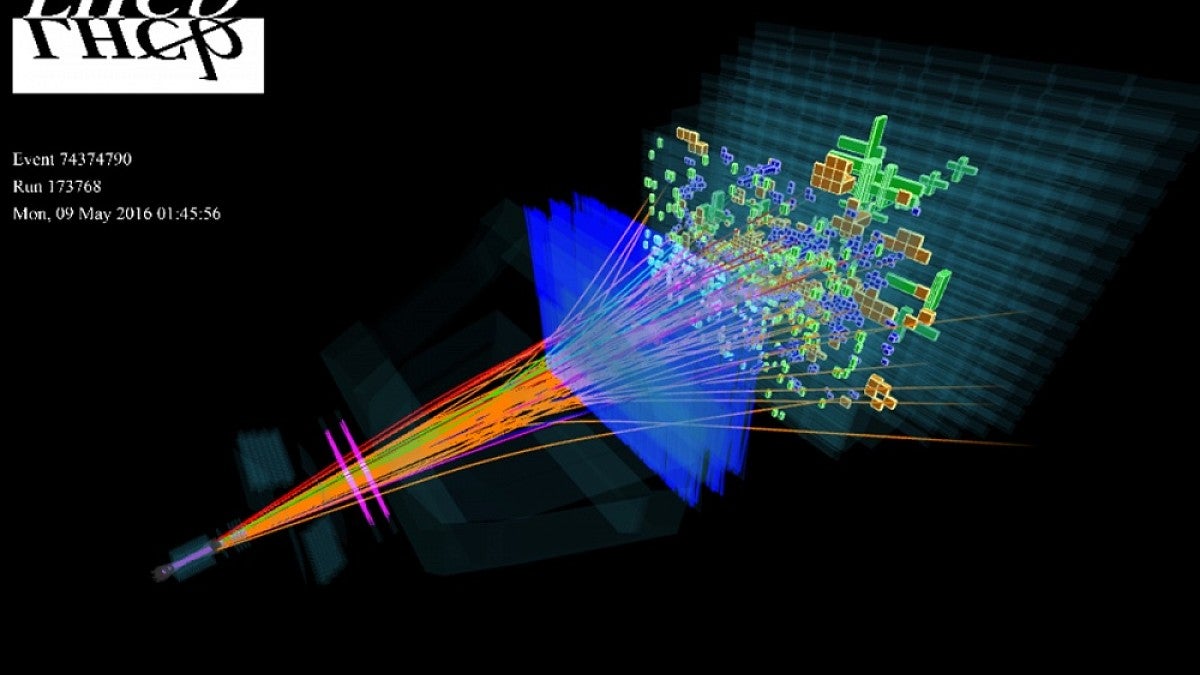After a brief hiccup in operations triggered by a wayward weasel-like beech marten, the Large Hadron Collider fired back up this month to start a 24-hour-a-day, six-month run collecting new data from an expected 2 quadrillion collisions of protons.
The world's most powerful particle accelerator, located in Europe and where the UO has a strong presence, will operate in its second run with more energy than ever with a promise of finding new fundamental particles. The first run delivered the long-elusive Higgs boson.
Just what may be the next discovery? That's the focus of a three-day conference, Emerging New Physics at the LHC, to be held May 18-20 at the UO. Participants will represent 12 institutions, including 17 UO physicists, four from the University of Washington and 11 other scientists.
The workshop, says co-organizer Spencer Chang, assistant professor in the Department of Physics, is designed to foster discussion and collaboration. It will be held in the Institute of Theoretical Science conference room on the fourth floor of Willamette Hall.
"What makes this second run so exciting is that the experiments are going to be running at about twice the energy they were running before," Chang said. "That increases the rate for most particle production rates, especially for heavier particles. This will enable the scientific team to confirm whether this intriguing excess is due to a new fundamental particle. In general, all of their physics searches will gain a boost in power and, thus, there is an enormous excitement in the field about what they might discover."
While open to the campus community and the public, the talks will be technical in nature and space is limited; the institute's conference room has a seating capacity of 30 people.
From 2010 to 2013 the collider produced proton-proton collisions with 8 tera-electron volts of energy. In the spring of 2015, after a two-year shutdown, LHC operators ramped up the collision energy to 13 TeV. The new LHC data that is obtained should help scientists verify some of the predictions of the Standard Model of particle physics and extend beyond the model's boundaries.
— By Jim Barlow, University Communications


